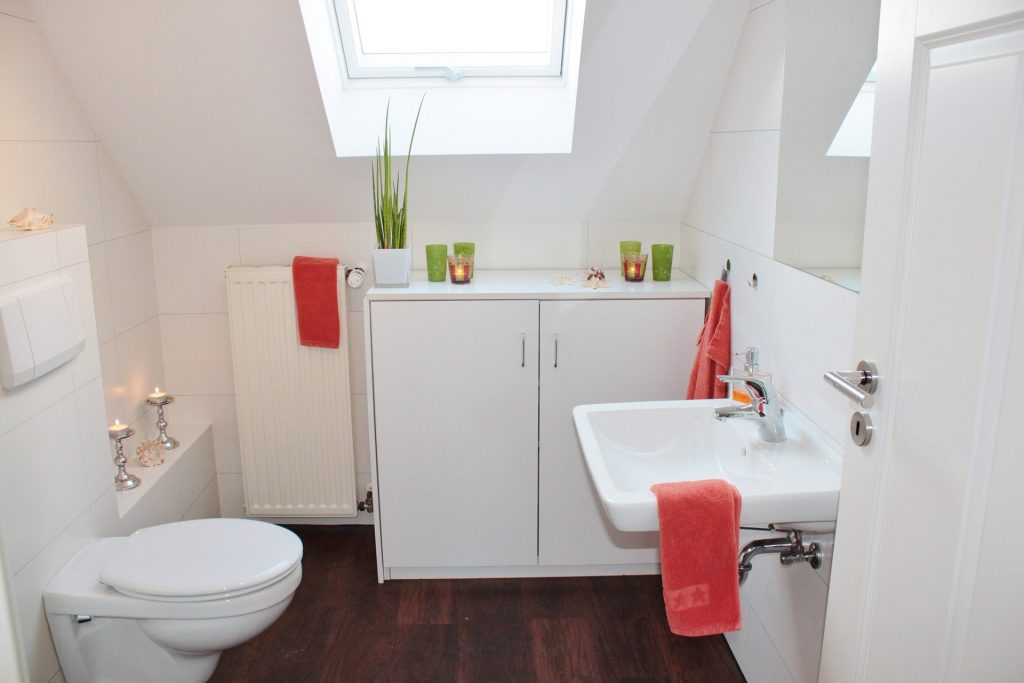Looking for a solution for a toilet that won’t start running? While several things may be to blame, the first thing to know is the flushing mechanism you have installed. In North America, many homes have the flapper flush, siphon, or the dual system. In commercial spaces, the toilets typically utilize the pressure-assisted flushing mechanism that packs more flushing pressure to prevent clogging. For the scope of this article, we will focus on remedies for a leaking toilet flapper, defective tank fill valve, and overflow problems.
Fixing a dual system (toilet won’t stop running with no float)
Dual systems, also called push button flush cisterns, typically don’t have a float that’s shaped like a ball. And that’s why you may be searching for how to fix a running toilet that does not have a float.
This flushing mechanism consists of two buttons, one button releases more water to handle solid wastes, and the other releases less water for liquid wastes. It makes for a water-efficient design. But it still retains some traditional components such as the fill valve, and certain things can go wrong.
If the toilet won’t stop running water, and you have a dual design, here are things to check:
The overflow level is off
The first step is to take off the lid. For most systems, the pushbuttons will be pushing directly on the flush valve mechanism, but some systems have a control cable that you need to detach.
It’s important to know the various components inside the cistern. You can use a handy diagram to identify the parts, but basically, there are three main parts:
- Fill valve – It acts as the water inlet, and connects to the water inlet pipe.
- Overflow tube – It’s open from the top, and it basically prevents water from overfilling in the cistern. Therefore, it drains any excess water into the toilet bowl.
- Flush valve – Of the two, it’s the most complex, and it allows water to flush into the toilet bowl. It’s typically at the center of the cistern.
The first problem that you can easily identify is if the water is filling above the overflow tube and leaking into the bowl. You can correct this problem by adjusting the water fill level by turning the water level adjustment screw. Ideally, the water level should be 1’ below the top of the overflow tube.
Flush valve not closing fully after flush
If the toilet won’t stop running after flush but the water level is below the overflow level, the likely problem is with the flush valve.
The first step is to remove it, and with most models, you just need to turn it to the left or right as if you’re unscrewing it from the bottom. It should release, and all the water in the bowl will immediately empty into the toilet bowl. The flush valve is secured into the flush valve seat with a seal that prevents leaking.
The flush valve seal is made from rubber, silicone, or plastic. It creates a watertight seal that keeps the water from emptying out. The seal could be defective, or there might be dirt impeding a watertight seal. You can attempt to remove and clean the seal, before reinstalling the flush valve to see if the problem is persistent.
Another issue could be with the opening and closing of the valve seal. If the operation is not smooth enough and the seal does not drop to the right level, the water may continue leaking. The original part may have been of poor quality. If this is the case, you may need to replace the entire flush valve mechanism.
Damaged float/inlet valve
Adjusting the water level adjustment screw may not stop water from overflowing into the overflow tube. So, if the entire float valve is defective, consider replacing it with a universal toilet fill valve, for less than $15. Replacing specific components of the fill valve such as the washer may be a bit tricky.
Why won’t my toilet stop running? The flapper system
This flushing system is also popular in the US. Not all flapper toilet systems have a float such as a ball. So, this might be the solution you’re looking for if your toilet doesn’t have a float.
Components of this system include the flapper (main outlet), overflow pipe, and water inlet. Here are possible things that could go wrong with a flapper system, and how to fix them:
Water draining in the overflow tube
With this issue, the water could be filling above the overflow pipe level causing it to drain into the bowl. You can adjust the fill valve with a water level adjustment screw. Let the tank refill and the water level should be at least 1 inch below the top of the overflow tube.
If the adjustment is not successful and the float keeps coming up, consider replacing the entire fill valve mechanism. If this has not fixed the issue, check the second solution.
Chain and flushing rod causing the flapper not to close properly
If the flapper is not closing properly, the water will leak from the cistern. It’s closed by the chain and flush handle lever/rod. The two need to be properly adjusted. If this doesn’t fix the issue, you can consider replacing the flapper.
Replacing the flapper
After adjusting the chain and rod, check the toilet bowl for further leaks. If the water flows intermittently or in spurts, this may indicate that there is a problem with the flapper.
Consider removing it by simply stopping the flow into the cistern. Flush the toilet and drain the rest of the water. Unhook the flapper. It’s held in place by two studs. You’ll also need to remove it from the chain connecting it to the flush handle level.
For the replacement, look for the American Standard Universal flapper with chain. It may be either 2 or 3 inches, so you can measure your old flapper. The part goes for less than $20.
Toilet still running non-stop? Seek professional help
Can’t figure out the problem why the toilet won’t stop running water? Well, you may have a more complex system that needs an expert to intervene. If you’re based in Missoula, Montana, you can seek professional plumbing services from us at Plumb-Tech. We’ve been helping residents solve plumbing issues here for more than 15 years and would love to help you get your toilet back in proper working order!





